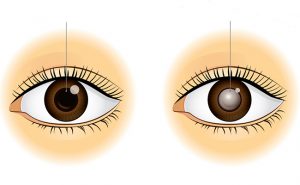
When a patient is treated for cataracts, the eye’s natural lens is removed because it has become clouded. In the past, the lens was not replaced, leaving the patient to rely upon thick glasses or specially designed contact lenses for adequate vision. Today, our Orange County patients benefit from the removal of cataracts, and achieve optimal vision through the implantation of intraocular lenses (IOL).
Intraocular lenses are varied today, and recommended based on the specific needs of the patient. Some used today include the following:
Monofocal IOLs facilitate single-distance vision, such as near, far, or intermediate. Using the monofocal type may mean that eyeglasses or contact lenses are still needed to see clearly at any distance. An alternative to wearing corrective lenses is to have a multifocal IOL placed. This option facilitates multi-distance vision while minimizing the need for outside help, allowing for driving, reading small print, such as product labels, price tags, and magazines, and living without the inconvenience of having to put on and remove glasses from task to task. These are considered premium lenses since they help correct presbyopia, which is the natural loss of near-focusing ability as we age.
For patients with astigmatism, intraocular lenses may be the most suitable premium lens; some even filter UV or blue light. Having astigmatism means that the cornea of the eye is shaped more like a football than being completely round. The result is blurred vision at any distance. While monofocal, multifocal, or accommodating intraocular lenses are designed to improve vision at near, far, or both, none of these options can correct astigmatism.
Accommodating IOLs provide clarity for visualizing at multiple distances through different points of focus, with the greatest benefit at far and intermediate distances. Designed to facilitate functional vision while minimizing the use of glasses, accommodating IOLs allow for driving, working on the computer, and seeing larger print. You will likely need glasses for the smaller print. An accommodating IOL should mimic the type of movement seen in the natural crystalline lens, which is flexible and moves easily back and forth as we focus on objects near and far.
CALL OUR OFFICE FOR MORE INFORMATION
(949) 441-5444When planning cataract surgery in our Orange County facility, you are an integral part of the planning process. Working together with Dr. Salib, the most suitable intraocular lens will be determined and your vision restored. Contact us to arrange your vision consultation.
Share This Article
Back to Cataracts Page










